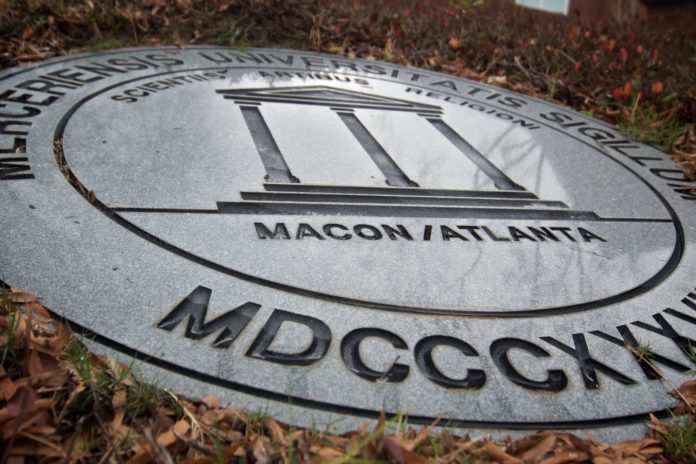MACON — With college football’s national signing day looming, Mercer University economics professor Allen K. Lynch, Ph.D., and two colleagues have launched a Web site – http://ssbea.mercer.edu/recruiting.htm – featuring predictions for the college choices of the top 250 players who have yet to commit from this year’s prep football recruiting class, according to Rivals.com. While Dr. Lynch is a sports fan, he’s not a recruiting expert. However, the econometric model that the group has developed is. For those players on the list that have chosen a school, it is predicting at a greater than 75 percent rate.
“The model has consistently provided reasonably accurate forecasts over the last several years, and it appears that the trend of accurately predicting the choices of high school athletes will continue,” Dr. Lynch said. “As of today, the model has accurately predicted the college destinations of an overwhelming majority of high school athletes who have committed. We’re looking forward to Feb. 4 to see how it does for all recruits under study.”
The 2007 model predicted at 71 percent accuracy, while the 2008 model was 73 percent accurate.
Dr. Lynch, an associate professor of economics and quantitative methods in Mercer’s Stetson School of Business and Economics, developed the model with colleagues Mike DuMond, Ph.D., a research economist for ERS Group Inc., of Tallahassee, Fla., and Jennifer Platania, Ph.D., an assistant professor of economics at Elon University in North Carolina. The trio has been working to perfect the model for several years and last year published a paper about the model in The Journal of Sports Economics.
The model identified the following factors as most important to prep football recruits in selecting their colleges:
• Whether the athlete made an “official visit” to a specific college
• Whether the school is in a BCS conference
• The distance from the high school athlete’s hometown to a specific school
• Whether the recruit is in the same state as a specific school
• The final AP ranking of a specific school in the previous year of competition
• The number of conference titles a school has recorded in recent years
• Whether the school is currently under a “bowl ban” for violating NCAA rules
• The current number of scholarship reductions a school faces for violating NCAA rules
• The size of the team’s stadium (measured in terms of seating capacity)
• Whether the school has an on-campus stadium
• The current age of the team’s stadium
To develop the model, the authors used statistical software developed by SAS and data provided by Rivals.com, a national website dedicated to college football and recruiting. The model was built on a database capturing characteristics and decisions of 3,395 recruited athletes for the three “recruiting seasons” between 2002 and 2004. On average, each player was choosing from among a group of four schools. A wide array of player- and team-level data was gathered for this task. Then, a special form of a probit model was developed to capture, to the best extent possible, a statistical equation to capture the decision-making process.
About the Eugene W. Stetson School of Business and Economics at Mercer:
Established in 1984, the Eugene W. Stetson School of Business and Economics offers bachelor’s, MBA, Professional MBA, Executive MBA and Master of Accountancy degrees. The School holds accreditation from the prestigious AACSB International — The Association to Advance Collegiate Schools of Business, considered the hallmark of excellence among the nation’s top business schools and placing it among the top 25 percent of all business schools in the world. For 2009, the Princeton Review recognized the School as No. 3 for “Greatest Opportunity for Women” and one of its “Best 296 Business Schools.”
About Mercer University:
Founded in 1833, Mercer University is a dynamic and comprehensive center of undergraduate, graduate and professional education. The University has approximately 7,700 students; 11 schools and colleges – liberal arts, law, pharmacy, medicine, business, engineering, education, theology, music, nursing and continuing and professional studies; major campuses in Macon, Atlanta and Savannah; three regional academic centers across the state; a university press; two teaching hospitals — Memorial University Medical Center and the Medical Center of Central Georgia; educational partnerships with Warner Robins Air Logistics Center in Warner Robins and Piedmont Healthcare in Atlanta; an engineering research center in Warner Robins; a performing arts center in Macon; and a NCAA Division I athletic program. For more information, visit www.mercer.edu.
About ERS Group:
ERS Group is an economic and financial consulting firm that specializes in analyses for complex business litigation, matters involving employment decisions, and regulation. Over 3,000 clients, including Fortune 500 companies, law firms, universities, industry trade associations and government agencies, have retained ERS Group professionals in a wide variety of cases involving numerous industries. For more information, visit www.ersgroup.com
— 30 —










